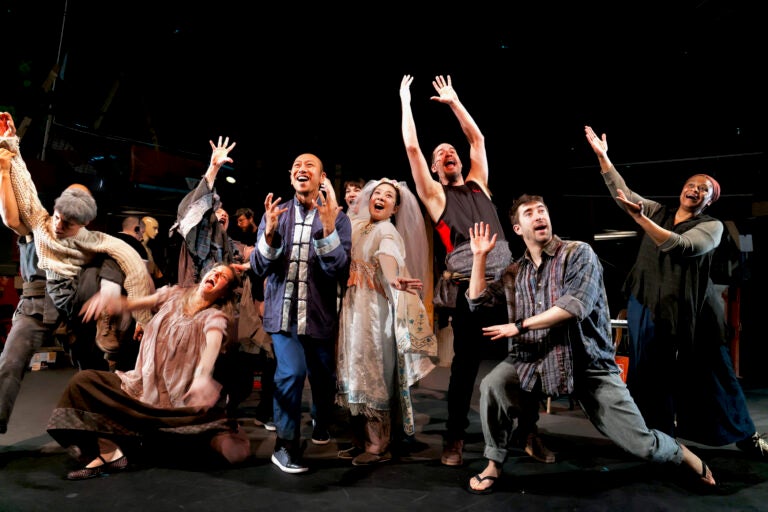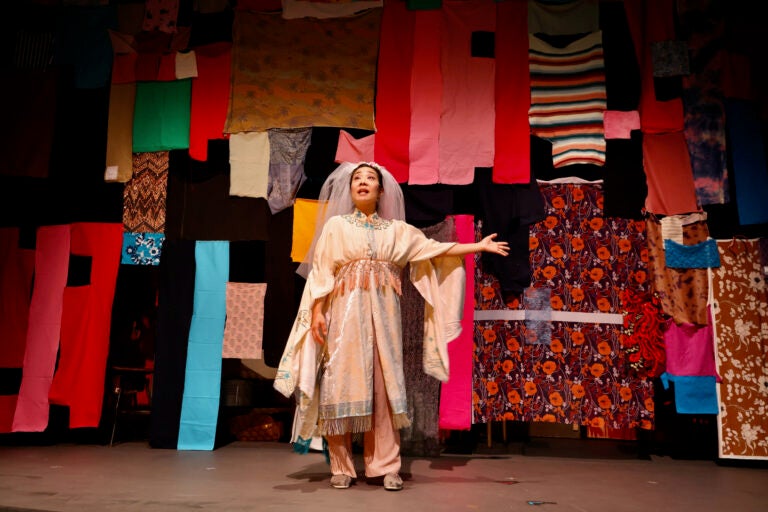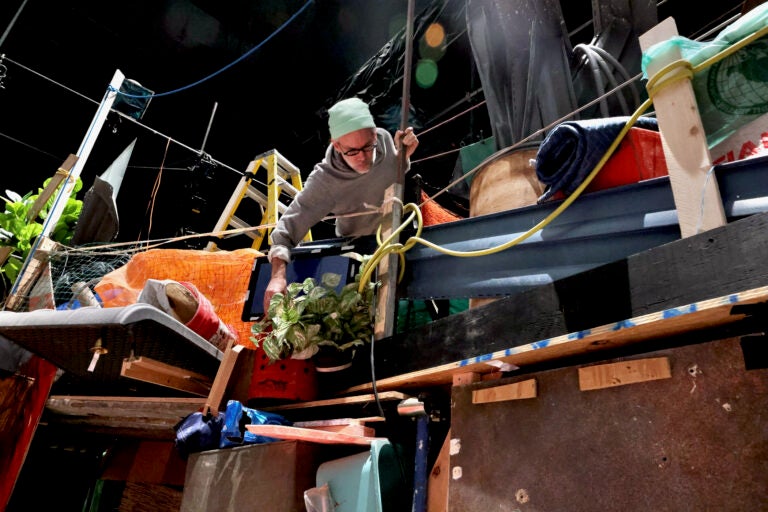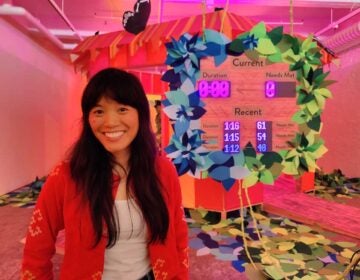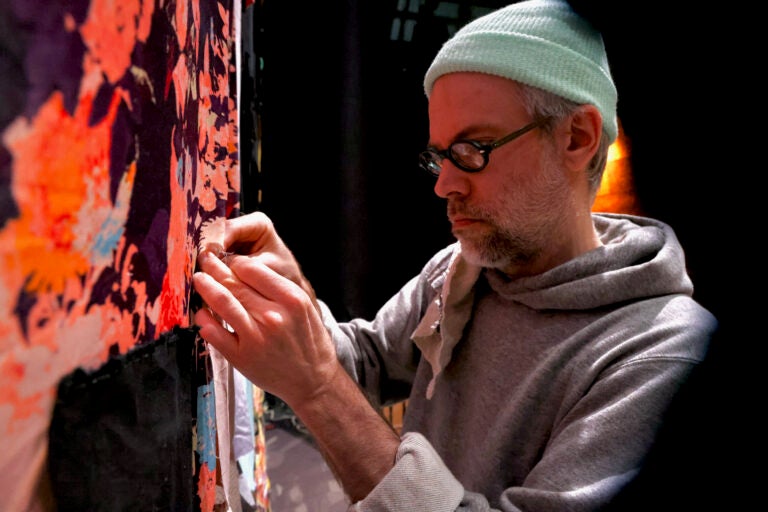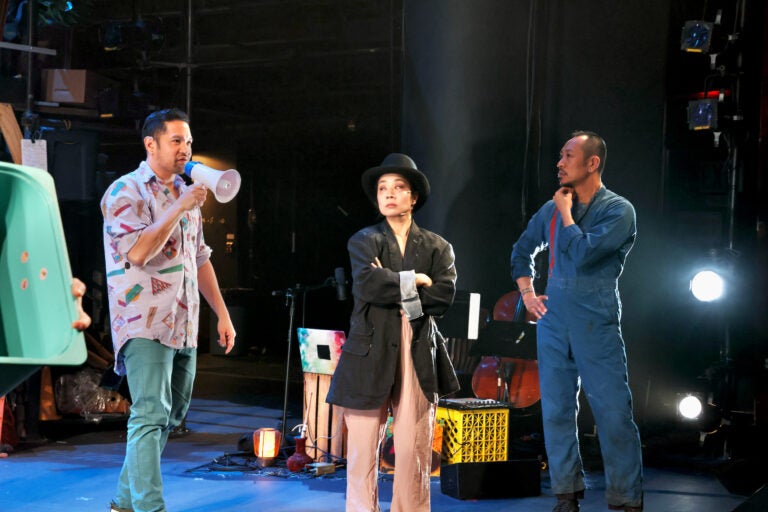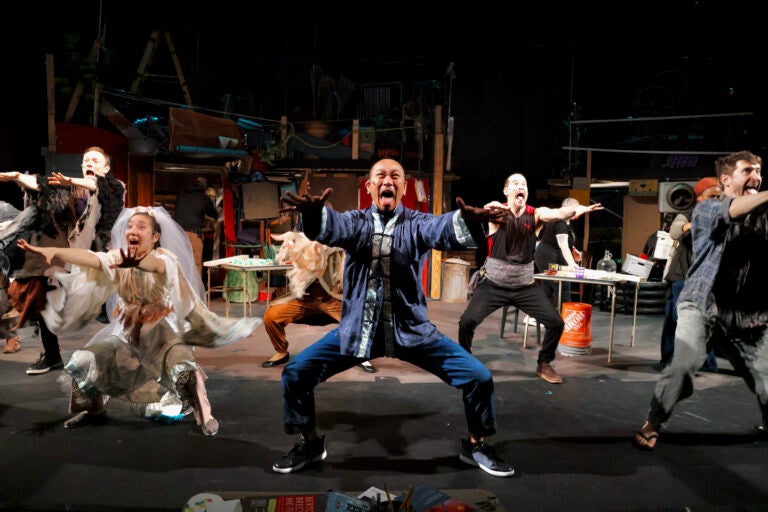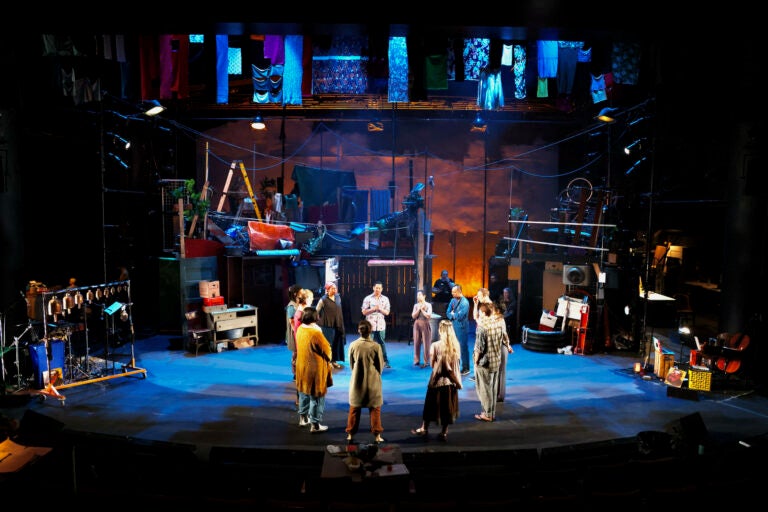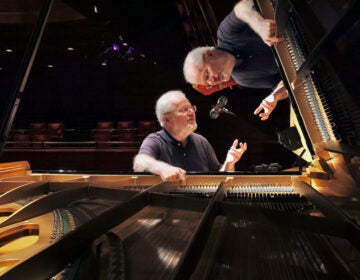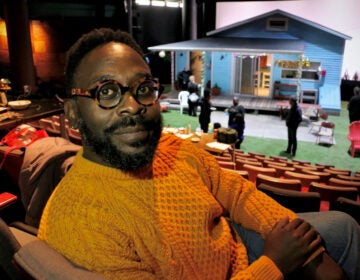Wilma Theater spoofs Asian cultural ignorance with a wall of trash
Brecht’s “The Good Person of Setzuan” is a hodge-podge of Asian cultural references to spoof audience awareness.
Listen 1:53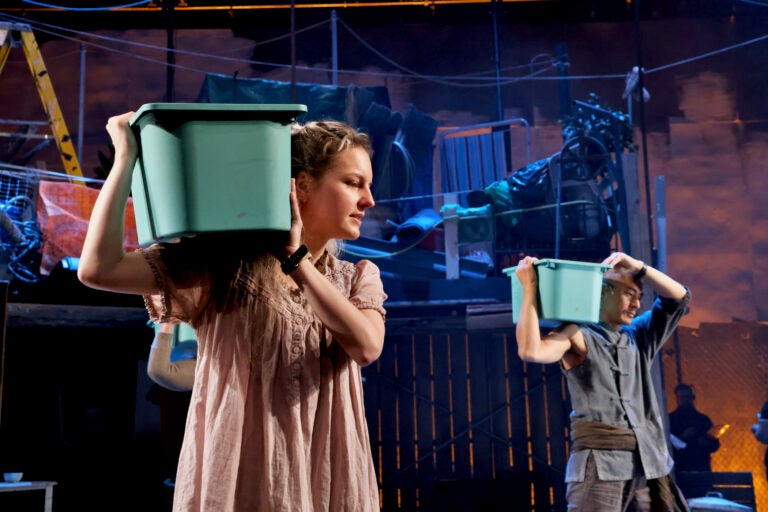
Recycled plastic bins become props and percussion instruments for the cast of ''The Good Person of Setzuan'' at Wilma Theater. (Emma Lee/WHYY)
From Philly and the Pa. suburbs to South Jersey and Delaware, what would you like WHYY News to cover? Let us know!
The set of the Wilma Theater’s production of “The Good Person of Setzuan” looks like a pile of trash, because it is.
Bicycle parts, broken furniture, an industrial ventilation fan, construction fencing, an empty banana box, an old hand-drawn water pump, pex hosing, etc. The proscenium curtain is a patchwork of discarded clothing stitched together by hand.
Set designer Steven Dufala sourced much of the material from Revolution Recovery, an industrial recycling center in Holmesburg on the Delaware River where his brother and occasional artistic partner Billy Dufala founded the artist-in-residence program, RAIR Philly.
After the run of “Good Person” most of its set will return to Revolution Recovery and re-enter the recycling stream. In an industry that typically throws everything away when the sets are struck at the end of a play, Dufala intends this to be a zero-waste production.
“I’ve done shows where I’ve been horrified because at strike they’re like, ‘You’ve got 20 minutes to get whatever you want to keep out of the set. It’s going in a dumpster,’” he said.
Dufala did not build a set based on predetermined design drawings, but rather improvised how it would look and function based on material he finds in the trash.
It’s a backward way of thinking that could be a more sustainable way of making theater. Nathan Renner-Johnson, director of the set building nonprofit Philadelphia Scenic Works, said letting materials determine the design goes a long way toward sustainability.
“If we’re trying to do this exact right thing, exactly as it’s been drawn, it really does take time and money,” he said. “But if it can be more like letting the art inspire you — I think of Bob Ross where it’s, like, ‘You just tap the brush a couple times and, wow, it looks like happy trees.’”
In this case, the aesthetic of trash is what director Justin Jain is going for. His version of “Good Person of Setzuan” is set in a Filipino trash slum. The Philippines is one of the world’s biggest polluters of water-borne plastic, where whole communities are based on the economics of picking through trash.
Jain, who is Filipino, said the trash on stage serves a creative function just as it does in the Philippines. It’s where actors find their props, where on-stage musicians reveal percussion elements, and where secret passageways give characters entrances and exits.
“To us Westerners —First World folks — we see a cardboard box and all we see is a cardboard box,” Jain said. “But the ingenuity and adaptation that people who live in that environment see in a cardboard box is really exciting to me. Our stage may at first glance look like disorderly junk, but it has a curated sense of necessity.”
Jain does not stop there. Although “Good Person” is nominally set in China, the director asked the actors to introduce a hodge-podge of cultural cues from several Asian countries.
“What if this character is wearing Chinese characters on their costume, and another person says, ‘What if this particular character is a ruthless Vietnamese businessman?’” he said. “Then me coming to the table saying, ‘What if this is set in a Filipino slum?’ A musician is saying, ‘What if we use these Indian bells?’ I am saying yes to all of it.”
It’s a fantasy tableau Jain calls a “fictional, pan-Asian Narnia.” The play intentionally thwarts cultural continuity, assuming many in the audience will likely not know the difference. The joke is on them.
Jain is trying to put teeth back into Brecht. The story written by the German playwright in 1941 is about a trio of gods trying to test the morality of mortals by giving a poor Chinese woman some money. She is able to open a small tobacco shop with her windfall, but ensuing complications test her moral mettle.
Setting “Good Person” in China created alienation among Brecht’s primarily German mid-century audience. His signature theatrical effect, Verfremdungseffekt (roughly translating to alienation effect), was to keep the audience at a comfortable arm’s length from the story until what had seemed foreign reveals itself to be about them, precisely. Brecht wanted to implicate his audience.
That was 80 years ago. Since then other Orientalist plays have entered the canon, such as “M. Butterfly,” “The King and I” and “Miss Saigon.” Jain, a longtime actor at the Wilma taking his first turn as director there, wanted to lean into Orientalism to turn it on its head.
“If I do the Google search of this play, I can find a million versions of non-Asian bodies donning rice hats and painted eyes and silks galore in bamboo huts. That kind of violence has hurt my spirit for way too long,” he said. “To finally have the keys to one of our major regional stages, I’m representing myself on stage in an equally violent and aggressive way, embraced with humor and care and mindfulness.”
“Good Person” is the first time three prominent Asian American Pacific Islander artists in Philadelphia’s theater scene have worked together: Bi Jean Ngo with a Vietnamese background, Makoto Hirano who was born in Japan, and Jain. They all layered their own backgrounds into the story.
WHYY is your source for fact-based, in-depth journalism and information. As a nonprofit organization, we rely on financial support from readers like you. Please give today.



